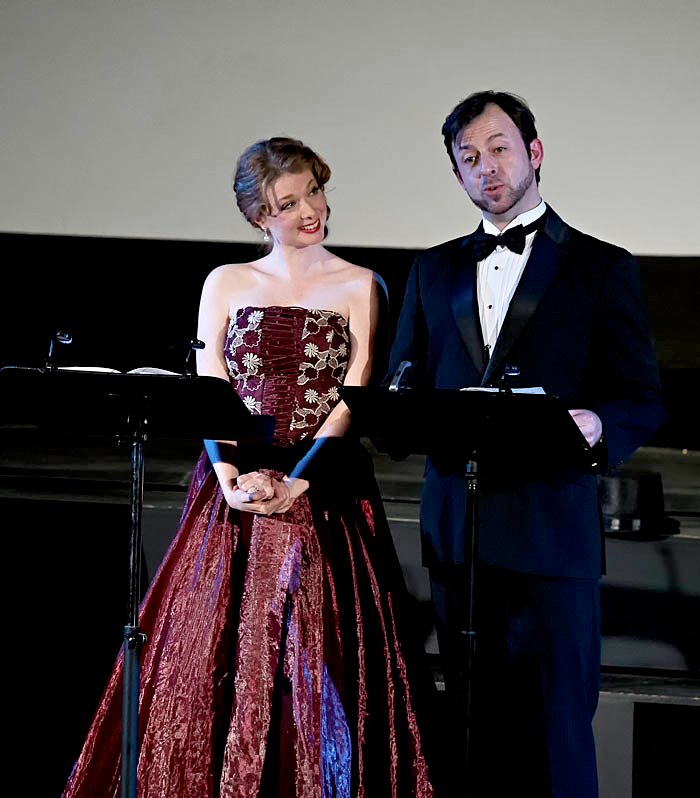
Capital City Opera's concert opera format does not include sets and allows the audience to connect with the performers, cast member Kim Bentham says. Credit: (Courtesy of Capital City Opera.)
An Ottawa opera company is attempting to make the musical art form more accessible to local audiences with the help of a world-renowned gay singer.
Baritone Dion Mazerolle has spent much of his career singing his way through Austria, Romania and France, but on Jan 24 he will play Figaro in Capital City Opera’s (CCO) production of The Barber of Seville at the Mayfair Theatre.
Now in its third production, CCO’s approach to opera is unique. Although attendees can dress up in formal attire, the company promotes a “jeans-friendly” atmosphere. Casts are selected through online voting, and the performances don’t feature costumes or sets. Audience members who aren’t fluent in Italian can follow along with subtitles projected onto a screen.
“It’s a new, hip, avant-garde way of getting people informed about opera and getting the new generation hooked on it,” Mazerolle says.
An opera veteran, Mazerolle has appeared in several productions of Rossini’s opera buffa. While many Canadians would know it from Bugs Bunny, Mazerolle says, The Barber of Seville‘s slapstick and romance can pull in anyone.
First performed as an opera in 1816, Rossini’s version of The Barber of Seville quickly replaced earlier interpretations by rival scribes. The story follows a count who lusts after an unavailable young woman with help from his former servant.
CCO founder Rory McGlynn says his passion for opera blossomed at age 15. He says opera was the first type of singing he could actually feel.
“You know when you feel a voice, when you feel like a bass drum?” he asks. “I heard someone sing, and it hit me really hard. I absolutely fell in love with it.”
In the years since he first became smitten with the operatic style, McGlynn has worked with several international opera companies, in addition to the Toronto-based outfit Opera in Concert.
“I got to see the seedy underbelly of how an opera company works,” he says with a laugh.
When McGlynn moved back his hometown of Ottawa in 2009, he says, he noted a lack of incentive for promising opera performers to stay in the city.
“I realized that to keep young artists from seeking alternatives in Toronto, BC and Calgary, we needed more programs for young artists to make money and sing, so they might stay or return,” he says. “I felt like there wasn’t enough of it here.”
Kim Bentham, who plays Berta in the production, says CCO does not compare to other companies she’s worked with. Its relaxed approach allows her to perform without feeling the need to act like a “stuffy opera babe,” she says.
“The singers and the characters become very approachable to the audience,” she says. “We encourage people to laugh out loud and not be afraid to clap when they want.”
For those unfamiliar with opera, Mazerolle says knowledge of the art form is not essential to enjoying the show.
“Anyone who can enjoy a movie, a sitcom or a TV show can be touched by opera,” he says. “Opera is not that far away from us.”


 Why you can trust Xtra
Why you can trust Xtra


